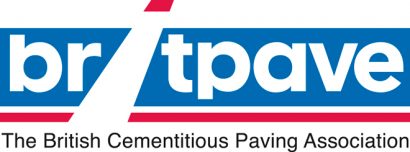Infrastructure group calls for whole life concrete slab track solution
Posted: 26 October 2016 | | 2 comments
Transport infrastructure association Britpave discuss the benefits of concrete slab track in rail investment




Transport infrastructure association Britpave, has called for the examination of whole life cost benefits to be a perquisite for rail track investment. In a new report, ‘The whole life (and other) benefits of concrete slab track’ the association argues that consideration of whole life costs that includes full account of long-term assured maintenance and minimum disruptive maintenance will forward concrete slab track, rather than ballast track, as the most viable long-term option for rail tracks.
Concrete slab track is a rail track technology that offers significant whole life cost benefits and long-term performance advantages. For train operators and their passengers these benefits translate into the provision of high quality, reliable, low maintenance rail network. These benefits are proven by slab track’s use throughout the world. Firstly, in Japan and the U.S and now increasingly throughout Europe. In the UK, slab track use has, so far, been limited.
The report was produced by the Britpave Rail Task Group which is one of a number infrastructure sector specific task groups of Britpave, the British In-situ Concrete Paving Association, the others being roads, ports, and soil stabilisation. Britpave was established to promote the better and greater use of concrete for transportation and infrastructure solutions. Its members include major contractors, specialist equipment and material suppliers, consulting engineers and interested trade associations. Together, they provide a single voice for the in-situ infrastructure industry for the development of infrastructure solutions, contract best practice and input to British and European standards.


Announcing the publication the report, Steve Elliott, Britpave general manager said: “The UK is demanding more from its rail infrastructure than ever before. It is estimated that 2.5 billion rail journeys are made every year. This is forecasted to rise to over 3 billion by 2020. This calls for the examination and implementation of whole life costs. Here, concrete slab tracks with their long-life and minimum maintenance can play a pivotal role in long-term cost efficiencies.”
A growing number of studies forward the long-term, whole life cost benefits of concrete slab track. They conclude that the initial 10 – 30 percent higher construction costs of concrete slab are more than recovered by the minimal maintenance requirement and long-term reliability and performance when compared to ballast tracks which usually have much higher ongoing operational and renewal costs. These studies and evaluations have found that over the long-term, slab track offers more economically efficient solution with maintenance costs being reduced by 30 to 80%
Indeed, the payback period can be just 8 years. In Japan, the Shinkansen slab track system has a total construction cost of 1.3 times more than ballast tracks yet slab track long-term performance and minimum maintenance benefits means that these costs are balanced in 8 – 12 years. Whereas in Germany, slab track has been found to be 20% to 40% more expensive than ballast track but has almost zero future maintenance costs and almost 100% availability.
In addition to whole life cost benefits, concrete slab track offers a wide range of performance benefits. These include superior performance in reliability and track and ride quality and low intervention requirements. Concrete slab track fixes the track alignment and so track quality is consistent and stable. With ballast track the reliability and quality deteriorate between maintenance interventions which are necessary to maintain track geometry, alignment and quality. In addition, the ballast needs to be regularly cleaned and renewed.
There are also a number of design and construction benefits. Concrete slab track require less overall construction depth than the equivalent ballast track system. This is significant for tunnels, bridges, viaducts and piled sub-slabs where ballast depth is increased and ballast mats are required to counter grinding and attrition effects. There are considerable opportunities for integral design for optimisation of design and construction of trackside elements. The foundations for trackside or in track structures such as noise barriers, derailment containment and overhead electrification equipment can be integrated into the concrete slab design. Slip formed drainage channels can also be incorporated. Furthermore, slab track systems can be designed to provide high levels of acoustic performance, reducing the transmission of ground-borne noise and vibration.
“Concrete slab track offers significant whole life benefits and long-term performance advantages. This has been proven by track operators throughout the world. The increase focus on whole life costs should raise the signal for its increased use in the UK,” said Elliott.
‘The whole life (and other) benefits of concrete slab track’ is available free of charge from Britpave, email: [email protected] or download from: www.britpave.org.uk








So this whole report is rubbish? The above comment refers to just one example and yes, models can be tempered with. A holistic approach based on validated data is key to reliable outcomes with this type of exercises. This differs with each individual situation. Just one general conclusion cannot be drawn.
Tests in North America (conducted on the High Tonnage Loop at TTC sponsored by the Portland Cement Association) have indicated the marginal cost of slab track capable of surviving the load environment in that theater are much higher. Depending on the discount rate chosen it comes no where near being the lowest life cycle cost alternative.